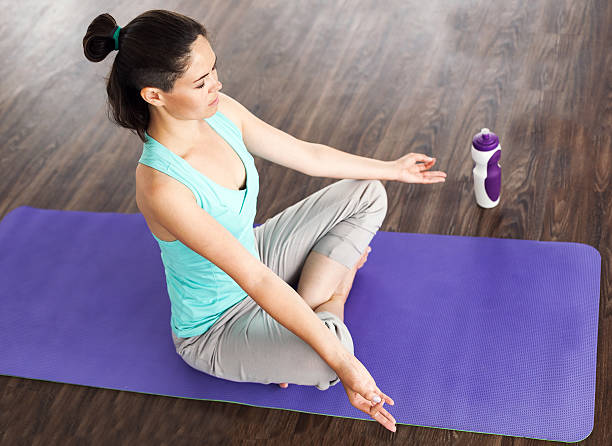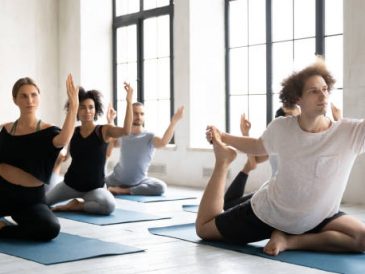In yoga, we call the branch dedicated to our breathing techniques Pranayama, which means breath control.
Breathing exercises can be an important part of any yoga routine, but they are also useful in everyday life. You might need some guidance if you are new to yoga. This 30-Day Meditation Challenge helps you to move with intention and stay connected to your breathing.
You can use a variety of techniques to achieve different effects. These are just some of the methods listed in no particular sequence.
It’s important to breathe in and out slowly before you begin each exercise. As your body becomes more ready, you can increase the time for each exercise. Stop and breathe normally for a few moments if you feel dizzy.
Lion’s Breath
This breath control exercise encourages a sudden release and brings a bit of playfulness to the practice. This is a great breathing exercise for children. This is a fun breathing exercise for adults, especially on Saturday mornings or Friday evenings when everyone is ready to embrace the weekend and let go of their week.
Inhaling through the nose, then leaning back your head and opening your mouth wide to loudly exhale while sticking out your tongue is Lion’s Breath. To enhance the effects, try practicing it while raising your arms on the inhale.
Breath of fire
This practice, which is used in Bikram’s class, is extremely warming, as its name implies. This practice is excellent for warming the abdominal muscles and igniting Tapas (heat) in the organs. This is a great practice for detoxing.
Inhale gently through the nose and then exhale vigorously through the nose while pulling in your navel repeatedly in short bursts. Every time you pull your belly in, it will cause an exhalation to follow quickly. Even out your exhales, both in terms of force, depth, and time.
Skull Cleanser
This technique, also known as Kapalabhati breathing, is a cleansing breath exercise that increases your energy dramatically. It is similar to the Breath Of Fire technique, but you should exhale more and raise your arms above your head in order to improve lymph circulation.
Hands in the mudra of choice. Try Apana Mudra to invoke the future. Make your hands into a dog’s head by placing your ring and middle fingers in a triangle on your thumb. Your pinkie and pointing finger should be straight up as ears.
Three-part Breathing
This is a great way to relax and relieve stress and anxiety. It is also perfect for frustrating situations. The Three-Part Breathing technique calms and soothes your muscles. This is a great way to finish a practice in the evening or start a restorative one.
Place one hand on the upper chest and the other on the navel. Inhale first into your chest, then your upper abdominal area, and finally your belly. Exhale slowly in the same manner, preferably from your abdomen, then your chest, and ultimately your belly.
Breathing through the alternate nostril
This breathing exercise helps you to maintain focus and avoid confusion. This breathing exercise is most effective before an exam or whenever you need to focus and be disciplined. This method of concentrating can calm the mind and help people sleep better if they tend to overthink things at night.
Place your pinkie, ring, and middle fingers, as well as your thumb, in the palm of your hands. Inhale by placing your thumb on your right nostril. Take your ring finger and put it on your left nostril. Now exhale from the right nostril.
Then, place your thumb on your right nostril while exhaling from the left.
Continue breathing until you have finished.
You may confuse left and right the first few times that you do this. You’re not the only one struggling with this. Remember that when you breathe in, you seal the breath. That is how you change sides.
Bellows Breath
The Bellows Breath can be a great way to start a Power Yoga practice in the morning or wake you up during a long meeting or lecture.
Raise your fingers wide or in small fists to the sky. With each exhale, lower your elbows to your side and emit a “HA!” sound.
It’s okay to shout. This is an excellent way to release any frustrations or pent-up energy.
Ujjayi Breath
It is the most commonly used breathing technique because it is simple to do during any physical practice. This technique is great for calming your mind and nervous system when you are in a difficult situation, both on and off of the mat. It can quickly cool you down because it sounds like an ocean.
Inhale and exhale through your nose to practice Ujjayi. Drag your breath down the back of your throat to create a soft hissing noise and the sensation of drinking a cool beverage through a straw. Each inhalation should be as long as your exhalation. Take each breath deeper until you can breathe long and smoothly.
As often as you can, practice your breathing techniques. Controlling your breath will improve your physical practice and allow you to hold each pose longer, deeper, and healthier.
It will also improve your emotional health, allowing you to remain calm and collected in difficult situations.
What is your favorite breathing technique for yoga, and why? Comment below and let us know!




